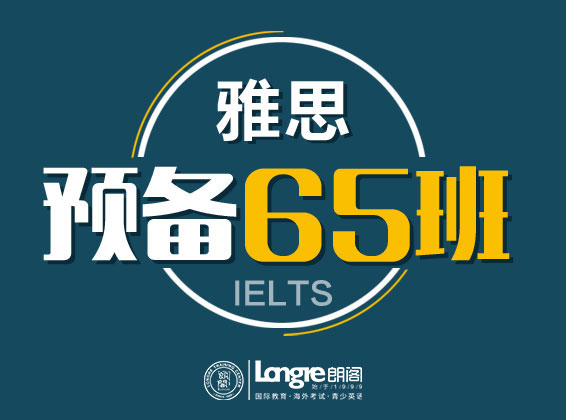|
對于參加雅思考試的同學來說,雅思口語是同學們認為比較難的一項,那么我們在雅思口語考試中要注意哪些呢? 1、只會使用單個單詞 只會說單個單詞。比如當考官問你work or study時,很多烤鴨只會說work或者study,而不會說完整的句子。比如:I’m still undergraduate, majoring advertising. 解決方法: 建議大家在回答問題的時候, 起碼也要使用完整的句子來進行表達,因為這也是表現尊重的一個方法,盡量避免使用單個單詞。 2、面無表情“機器人” 其實雅思口語考試在考試學生英語詞匯等能力的同時,考量的也是學生對口語的使用,而很多烤鴨的問題就是沒有辦法和考官面對面的交流,表情僵硬,要命的是在說到part2的時候,通過自己的表情明顯的告訴考官【我在背答案】,而導致扣分。 解決方法: 建議烤鴨們即使是使用模板,也要自己進行部分的改變和理解記憶,這樣的話表情起碼不會非常僵硬。 3、考官口音聽不清 雅思考試中考官不僅有歐美人,有澳洲,或者其他國籍,有時候因為考官自身的口音問題,導致烤鴨們無法聽清問題,這個時候,如果只會單獨的說一個pardon?可能會讓考官不快,或者認為你的語言能力不行。 解決方案: 當你沒有聽清這個問題的時候,不要直接告訴考官【我不懂你說什么】, 好是能夠使用一些“套話”的方法,來和考官進行確認。 比如當你沒有聽懂有些表達的時候,你可以這么說: Excuse me but could you explain what you mean by …… I didn’t get you just now, could you explain it again for me ? Sorry but I didn’t quite catch that/ I didn’t come across that , could you say that again? 如果你不確定考官的意思,或者不確定自己說的到底對不對,那么就這么說: Do you mean…… cause I’m not exactly sure. If I understand right, …… 使用這些較為婉轉的方法,來和考官進行確認,不要太擔心你沒有聽懂這些會不會讓考官覺得你能力不夠,因為你有能夠將自己的錯漏“圓”回來,這也是一種不錯的能力呢~ 4、單一語法與結構 前面說到的part2 部分很多烤鴨會選擇背模板,在背誦的同時只能夠進行單一語法和句子結構的表達使用,比如只能使用陳述句,祈使句,被動句等等用法都無法使用,并且只能選擇使用一般現在時,句子結構和語法都相對單一,就很容易造成失分。 解決方案: 模板并不是一定不能背,關鍵是要能夠取長補短的進行運動,即使是part2部分,不妨也使用總-分的結構進行陳述,尤其注意的是,一定要在答案中加上自己的看法,如果能夠說出曾經的經歷,有了自己的思考,那就好了。 比如在說到food這個話題的時候,可以先說favorite food is XXX, once when I was……,Can you imagine? The food is made of ……, I hope I can still …… in the future. 其實即使是很簡單的表述,也可以通過混合方法,來加強句子和段落之間的復雜程度,加深自己句法和語法表達能力。 分割線 流利度和連貫性是雅思口語的評分標準之一。其中,連接詞和語篇標示詞的使用是一項重要的評分項。不過大部分考生還是停留在and,but,so這三個簡單的連詞上。其實在考試中使用恰當的銜接詞,不僅能體現出銜接詞的地道和多樣性,也會對內容的連貫性方面的分數會有直接提高。 一、并列關系 并列關系在雅思口語考試的運用一般是在回答Why的提問時,當考生想闡述的理由不止一個,為了使自己的答案有邏輯,也為了讓考官能夠GET到自己的論點,通常,小烤鴨們都會選擇一些表示首先,其次,第三,…, 后的詞來引導句子,常見的表達方式有這些: 首先:Firstly, First of all, What I want to mention firstly is that….., Tostart with, To begin with, For one thing, My first point is that….. 其次:Secondly,In the next place, Moreover, My second point (reason) is that…. 第三:Thirdly, Furthermore, Besides 后:In the end, Finally, Lastly, In the end, My last point (reason) isthat…, Last but not the least 二、因果關系 因果關系,顧名思義,就是要解釋原因,常見的因果關系的用法有這些: 簡單就是so, because, 如果想避免重復,使自己的回答加出彩,我們還可以使用這些:due to, because of, owing to, thanks to, as a result of, inconsequence of, on account of,in view of, hence, therefore, thus, accordingly和consequently等。在口語中,有的時候一些nativespeaker會用cause或者coz來代替 because,在口語考試中這種非正式用法可以使用,但是切記不要使用的過于頻繁。 三、讓步關系 表示 讓步關系的用法一般有這些: Although,Though, Regardless of. Even if, Even though, As long as等 四、轉折關系 轉折關系是指一個句子里后面的分句沒有順延著前面的分句說下去,而是與它相反,我們反應想到的表示轉折關系的詞就是But,除此之外,英語中表示轉折關系的用法有這些: Although,Despite, However,In spite of, Instead, Nevertheless, On the contrary , Otherwise, Though , While,Yet 五、遞進關系 英語中表示遞進關系的詞語有: not only…but also,as well(as),at the sametime,besides,further more, in addition(to),like wise ,more over,worse still 同時還有一些句子可以表示遞進關系,以下的用法一般出現在說完一個Point以后打算進入下一個Point之前,比如: Another point I would love to say is that… On top of that I can also add that… And I shouldn't forget to mention that … In addition to what I’ve just said, I can add that… Apart from what I’ve mentioned, another key point is that 六、修飾關系 口語中表示修飾關系,一般都是對人,對事,對物,對時間以及對地點的修飾,通常一般會有從句的形式來修飾先行詞,常用來表示修飾關系的詞語有: that ,who ,which, when ,where 七、對比關系 對比關系是指一句話的前半句和后半句形成了對比,口語中常見表示對比關系的用法有: On the other hand ,while ,Whereas, Incontrast, On the contrary 八、舉例和泛指 在口語考試中,我們為了使自己的內容不要聽起來過于蒼白,因此經常加一些例子是自己的內容聽起來加豐富,英語中常見的舉例用法有: like ,such as ,Take...forexample , In some cases , and stuff like that , and things like that , or something like that 九、其他 as well , as well as , in terms of, instead of , rather than 十、不是連詞的表達 英語口語中,我們還可以用一些比較高大上的用法來給自己加分,比如: tend to ,basically , actually 十一、談及;談到;關于 Speaking of; talking about; when itcomes to; as far as s concerned.; as regards ; regarding; 通常用于幫助提示轉移話題,或轉換另一個角度或方面。 例1:Speaking of those old people who live alone, I guess their childrenwould support them financially, and visit them on a regular basis. 例2:As for how I felt about our city museum, I think it servessignificant purpose as far as education is concerned. 例3:When it comes to the drawbacks, I think students' study efficiencymay be low since there is no teacher around to supervise and motivate them. (責任編輯:admin) |







